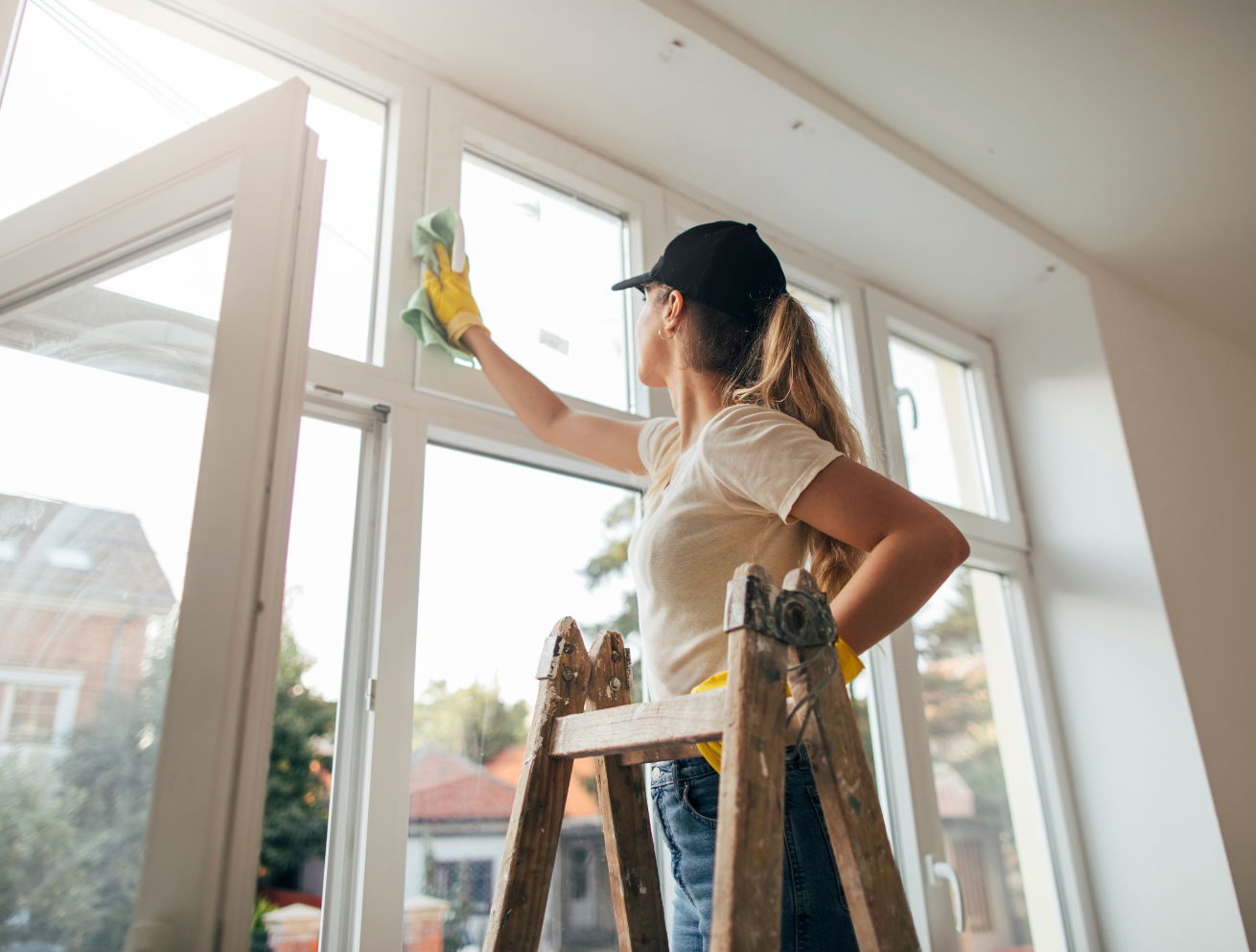As noted in a recent post in the Journal, homeowners undertake gut renovations or whole home remodels after natural disasters like winter storms, hurricanes, tornados, earthquakes, and wildfires. According to Maxine Joselow and Vanessa Montalbano in a recent article for The Washington Post, “weather disasters affected 1 in 10” American homes in 2021. Between residential buildings, commercial buildings, and public infrastructure, this report from CNBC notes that hurricanes cause the second most damage compared to other types of disasters. According to CNBC, hurricanes “caused $33 billion in property damage in 2021.” Of course, heavy winds, storm surges, and subsequent flooding all cause serious damage during hurricanes. But flooding can occur during seasonal storms and when snowpack melts too. With just under 15 million properties in 100-year flood zones across the US, flooding is one of the most common and devastating threats to the habitability of homes in our country. First Street Foundation’s Risk Factor tool shows more than 1.3 million of these properties are in Texas. That accounts for 18% of Texas real estate. Causing floorboards to buckle, carpets to mold, wooden beams to rot, and electrical to degrade, the aftermath of a flood can hold homeowners in limbo for months. If your property has flooded, know that you are not alone and that there are many resources available for affected homeowners. From contacting your insurance company with meticulous records to working with an experienced residential remodeling firm, we outline everything you need to know about beginning the renovation process after a flood. Read on to learn more about renovating after a flood.
Home Renovation Houston: What to Do When Your House Floods

Floods can be devastating. They sweep through homes, leaving behind destruction and heartache in their wake. When the floodwaters recede, homeowners must face the daunting process of documenting, cleaning, remediating, renovating, and rebuilding. But with the right knowledge, support, and guidance, homeowners can navigate this difficult process and return to safe, beautiful properties that will be better protected if another natural disaster strikes.
Of course, safety should always be your top priority when embarking on any renovation project after a flood. Once you’ve ensured your safety, the next step is to assess any damage. After documenting the damage and reaching out to your insurance provider, it’s time to start removing any standing water or excess moisture. Next comes cleaning and disinfecting every surface that came into contact with the floodwater. It may be necessary to remove and replace these materials entirely if they cannot be salvaged.
As you move forward with the renovation process, never hesitate to contact professionals. The cleanup process and the recovery process after a house flood both require assistance from experts. Now is not the time to DIY. You could expose yourself to mold spores, dangerous electrical wiring, unclean water, and so much more — even if you wear appropriate protective gear. Many tasks — like electrical work or structural repairs — are best left to experts who have the necessary knowledge and experience.
Throughout this challenging journey, don’t forget to take care of yourself and seek emotional support when needed. Dealing with the aftermath of a flood can be overwhelming, but there are many resources available to make your experience a bit less stressful. Working closely with your residential renovation firm, mortgage servicer, and insurance company will ensure you fix any flood damage quickly without putting any family members at risk.
Now, let’s get into the specifics of renovating a flooded house.
#1 Contact Your Insurance Company and Mortgage Servicer
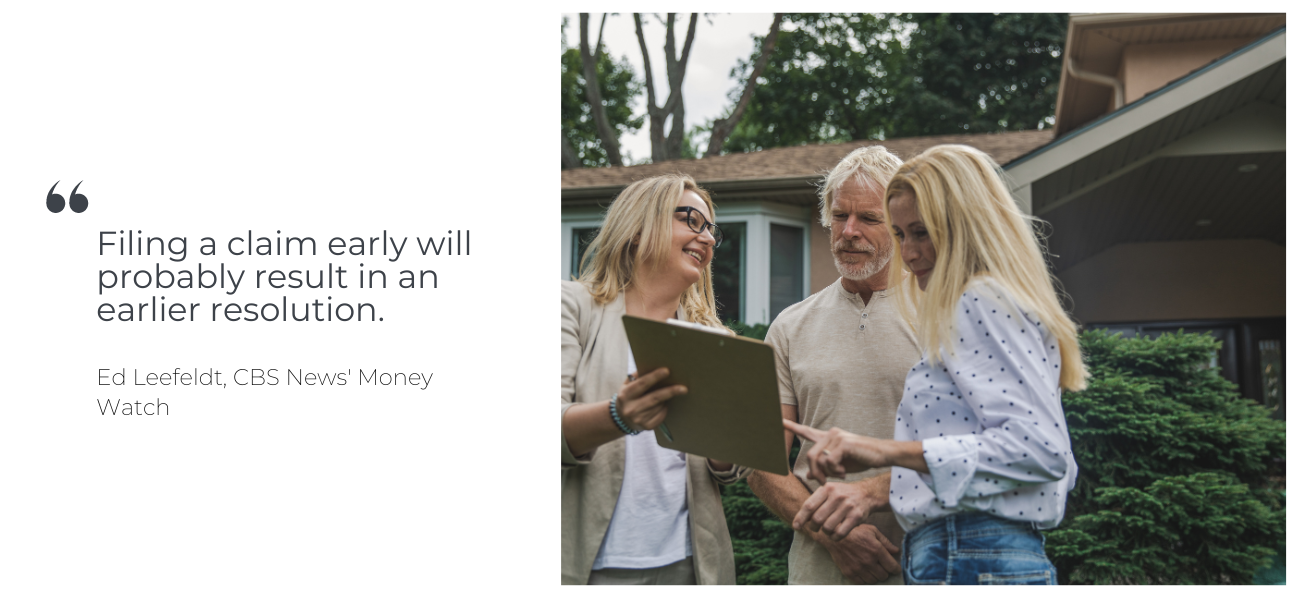
When your home has been flooded, one of the first steps you should take is to review your homeowners insurance policy and contact your insurance provider. If your flood insurance is provided by the NFIP, open a claim with FEMA here. Dealing with the aftermath of a flood can be overwhelming, and having the right insurance coverage can provide you with the financial support you need to recover.
Your provider will guide you through the claims process and help you understand what is covered under your policy. It’s important to document the damage by taking photos or videos before beginning any cleanup or repairs. Contact your provider as soon as possible. In an article for CBS News, Money Watch’s Ed Leefeldt writes that if other homes in your area were also damaged by floodwaters, “filing a claim early will probably result in an earlier resolution.”
Your insurance company may also recommend hiring a specialist to assess the extent of the damage and provide solutions for restoration. This could include drying out the affected areas, removing damaged materials, and treating for mold growth. Following their advice can help prevent further damage and ensure that your home is safe to live in.
In some cases, your insurance policy may cover additional living expenses if your home is uninhabitable due to flood damage. This can help cover the cost of temporary accommodation while your house is being repaired. Be sure to keep all receipts and documentation related to these expenses so that you can submit them as part of your claim. But do not take any remediation measures beyond draining, drying, disinfecting, and discarding until your insurance company has investigated and approved them.
Don’t Forget About Your Mortgage Servicer!
In addition to contacting your insurance provider and FEMA, reach out to your mortgage servicer. After a disaster, our attention is often laser-focused on remediation and recovery. Routine parts of our lives – like paying monthly bills – escape our notice. Mortgage servicers will typically waive fees related to late or incomplete payments if notified immediately about your situation.
#2 Wait to Enter Your Flooded Home Until Authorities Have Given Explicit Approval and All Utilities Have Been Turned Off
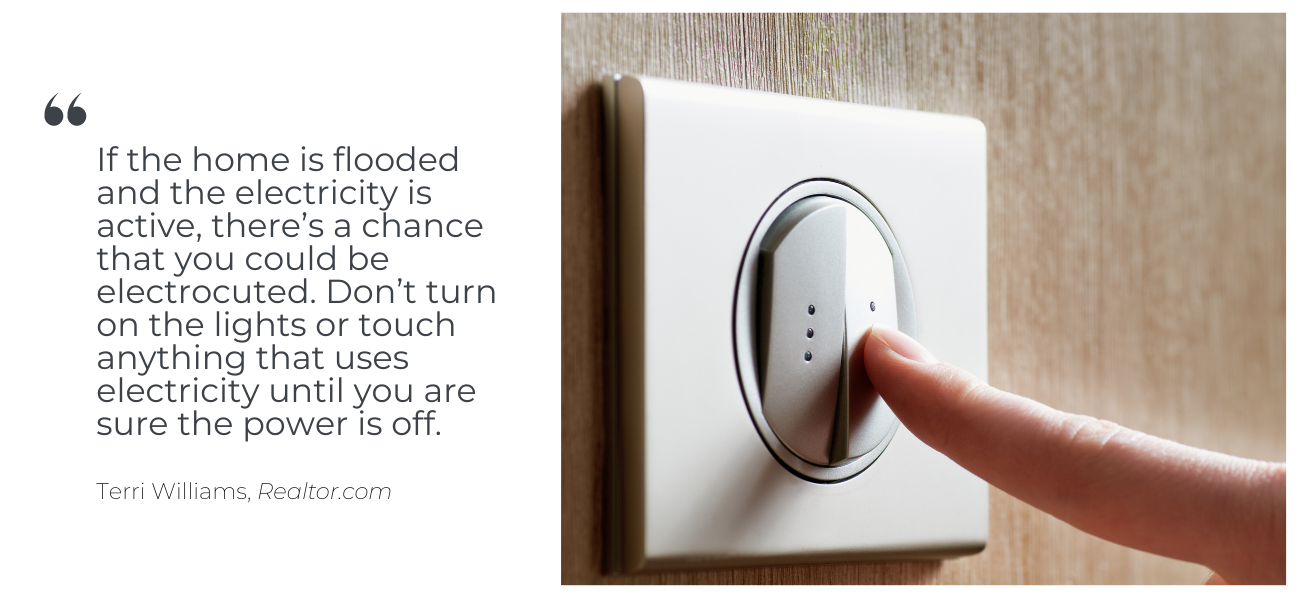
If flooding occurred during a winter storm or hurricane and much of your neighborhood was affected, it’s essential to wait for explicit approval from local officials before entering your flooded home. You could expose yourself to toxic chemicals, flying debris, mold spores, electric shocks, and much more. Regardless of the circumstances under which the flooding occurred, make sure that all utilities have been turned off before stepping foot into your water-damaged space.
Water and electricity do not mix well, and leaving the utilities on can pose serious threats to your safety. As Terri Williams writes in an article for Realtor.com, “If the home is flooded and the electricity is active, there’s a chance that you could be electrocuted.”
Once you have received permission to enter, take care to wear protective gear such as gloves and boots. These protective measures will protect you from contaminants that may have been left behind by the floodwater.
#3 Immediately Begin to Air Out the House
The first couple of days after flood water enters your home are the most critical. As such, you must begin circulating air throughout the home as quickly as possible to mitigate mold development.
Moisture left behind after a flood can not only encourage mold growth. Water trapped under floorboards and in beams can also cause significant structural issues. This hidden moisture might necessitate extensive repairs during your renovation.
Open windows and use fans to circulate air and aid in the drying process. In cases where extensive water damage has occurred, it may be necessary to hire a professional restoration company to ensure everything is properly dried and repaired.
#4 Check Drains, Gutters, and Doors to Prevent Stormwater from Reentering the Home
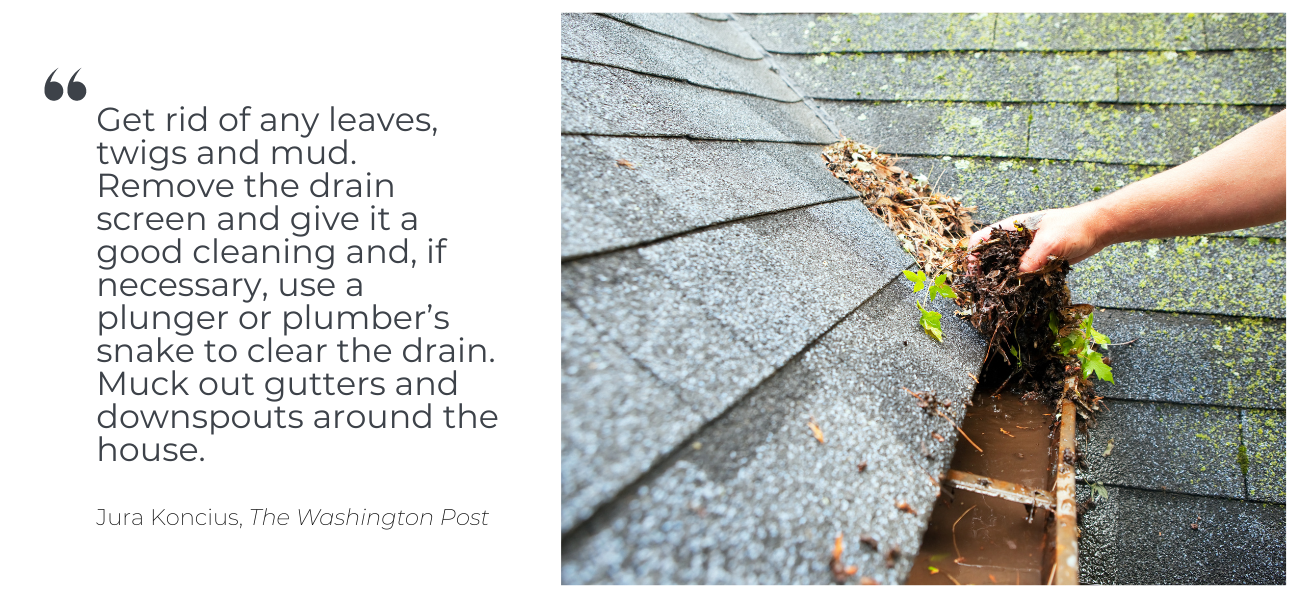
Next, homeowners should check drains, gutters, and doors to prevent stormwater from reentering the home after heavy rains. This simple yet important task can help mitigate future flooding and ensure that your efforts in renovating after a flood are not in vain.
In an article for The Washington Post, Jura Koncius recommends “getting rid of any leaves, twigs and mud” that might have clogged gutters and drains. This type of organic material can cause water to pool around the house and seep into the walls.
When assessing drains both indoors and outside, Koncius suggests that you “remove the drain screen and give it a good cleaning and, if necessary, use a plunger or plumber’s snake to clear the drain.” Last but not least, “muck out gutters and downspouts around the house.” If you suspect that your septic system, sump pump, or well has been compromised, contact a specialist as soon as possible.
#5 Do Not Use Your HVAC System Until Mold Remediation is Complete
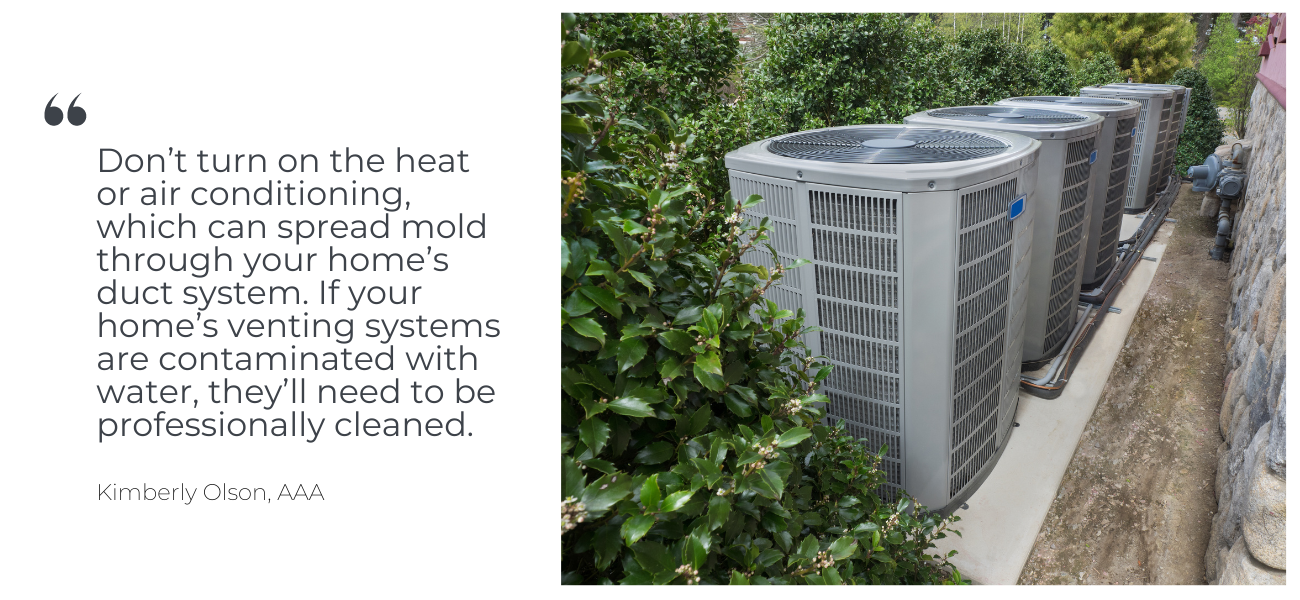
If mold has developed in your home’s ducting, you could expose yourself and your family to airborne particles by turning on the heat or A/C. Because mold spores can easily travel and spread mold damage throughout your home, you must refrain from using your HVAC system until a professional has assessed it. As Kimberly Olson warns in an article for AAA, “If your home’s venting systems are contaminated with water, they’ll need to be professionally cleaned.”
#6 Take Photos and Video Footage of Absolutely Everything
If you plan to file an insurance claim or apply for assistance from FEMA, you must carefully document damage to the home and to your possessions. Take photos or videos of any structural damage, destroyed furniture, etc. before starting any cleanup or repairs. This documentation will serve as evidence for your insurance claim and help ensure that you receive proper compensation for the damages.
When you call your insurance adjuster, you must provide as much documentation as you possibly can. FEMA recommends that you “organize this information room by room” to help your adjuster understand the extent of the damage from flood waters. Even if you get rid of flood-soaked items, you must retain samples of those items for your insurance claims.
#7 Drain and Completely Dry Within 24 Hours
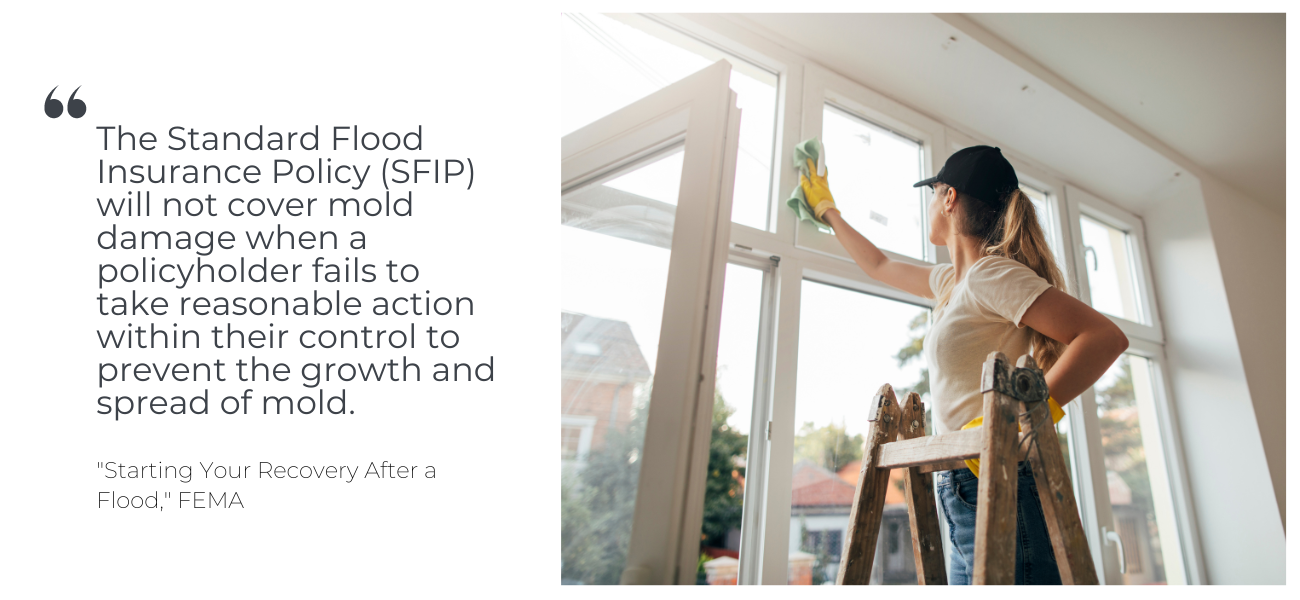
Opening windows and doors to encourage air flow usually isn’t enough to dry your home out after a storm surge or other type of flood. After all, the University of Texas Health Science Center at Houston recommends that you “clean up and dry out your home quickly after the storm ends — within 24 to 48 hours if you can.”
If you plan to do it yourself, you will need a wet vac and fans to prevent mold. For a home that has sustained intense flooding, we recommend working with a professional cleaning crew.
The primary goal is to rid your home of standing water and to discard any water-logged items as fast as possible. In fact, this resource from FEMA notes that “The Standard Flood Insurance Policy (SFIP) will not cover mold damage when a policyholder fails to take reasonable action within their control to prevent the growth and spread of mold,” so it’s vital to act promptly.
You might have to discard certain items to prevent mold from developing in your home. If you throw away any furniture, decor, carpet, or building materials, remember that your insurance adjustor will want evidence of damage to wallpaper, carpet, etc. It’s fine to take samples and discard compromised items.
#8 Work with Local Professionals to Address Damage to Your Home
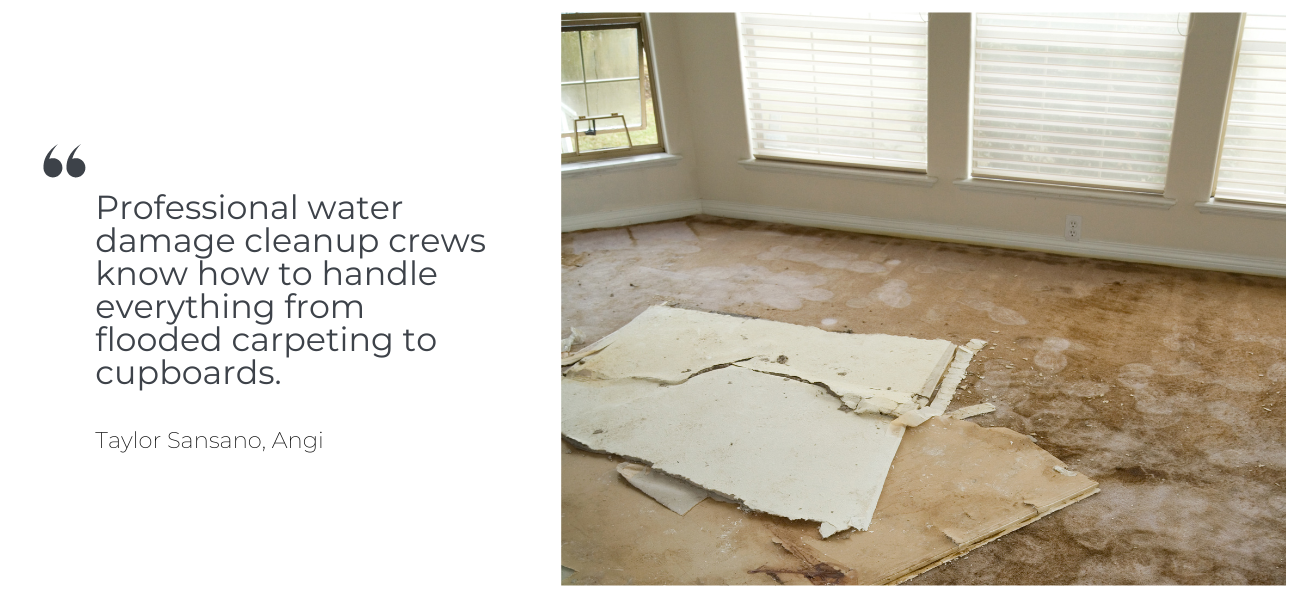
Water can cause extensive damage to your house — affecting everything from furniture to the home’s structural integrity. To start, we recommend working with professional cleanup and restoration companies. They will assess the extent of water damage and the spread of mold throughout your home.
In an article for Angi, Taylor Sansano notes that “professional water damage cleanup crews know how to handle everything from flooded carpeting to cupboards.” The cost to have your home professionally cleaned after a flood might sound steep. Sansano estimates that “water damage restoration costs $3,300” on average. However, what you end up paying “will depend on the severity, type, and location of the water damage.” It will also depend on how much your insurance provider covers.
Next, contact a local electrician and plumber who can assess the condition of electrical and plumbing systems. Finally, work with a residential renovation firm in your area to return your home to its former glory — with a few added updates! We emphasize “local” because these firms understand threats of recurrence better than firms from out of town. They are also well-versed in local building codes.
#9 Flood-Proof Your Home During the Renovation
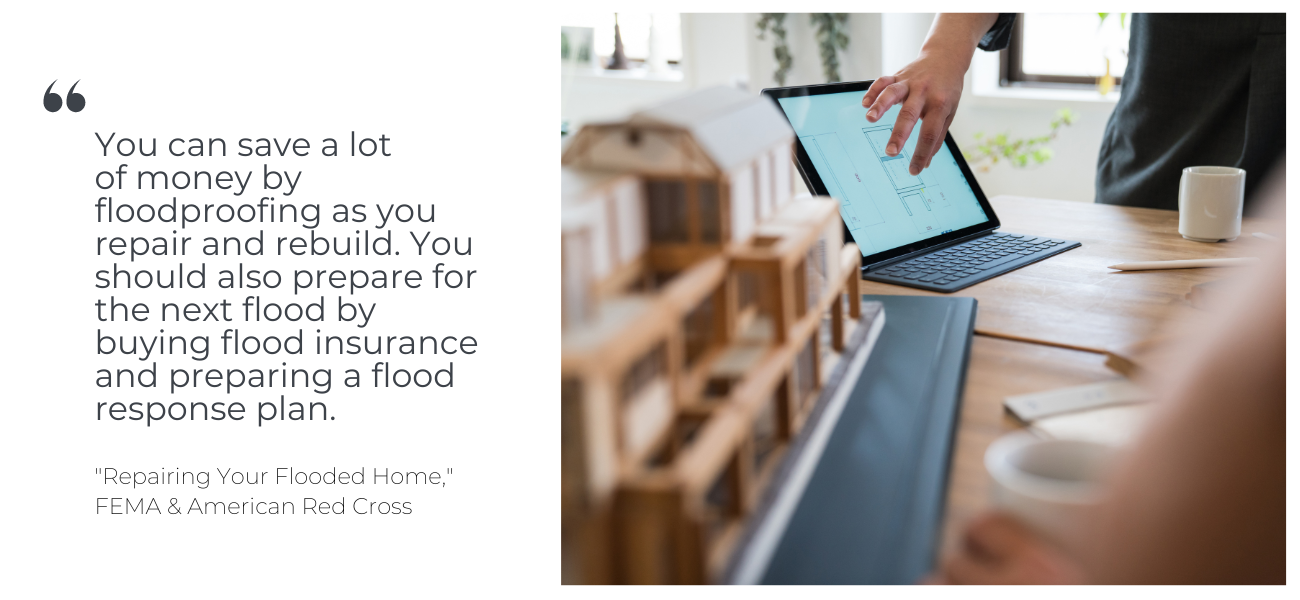
During preliminary consultations with your residential renovation firm, you will discuss repairs, functional updates, and cosmetic changes. One of the many benefits of working with a residential design firm is that they will integrate protective measures into the renovation. They will take steps to flood-proof your home so it is better protected against storm damage in the future.
According to this booklet assembled by FEMA and the American Red Cross, “it is very likely that your home will be flooded again someday” if you live in a flood zone. Given this, it makes sense to flood-proof your home during your renovation. FEMA defines flood-proofing as “using materials and practices that will prevent or minimize flood damage.”
#10 Prioritize Your Mental, Physical, and Emotional Wellbeing
Last but certainly not least, it is vital to prioritize your mental, physical, and emotional well-being after your house floods. There are many physical consequences of living in a home that has flooded. Mold and hazardous materials can cause respiratory issues and exacerbate many medical conditions. But the emotional and mental impacts of a flood can be just as harmful.
According to this resource from the American Psychiatry Association, both adults and children struggle after experiencing a natural disaster. Adults frequently struggle with “stress and insomnia, high-risk coping behavior such as increased alcohol use, and mental disorders such as depression, anxiety, and post-traumatic stress.” Children can suffer from feelings of numbness, anger, and fear.
It’s essential to seek support — and medical attention if need be — while recovering after a natural disaster.
Still Have Questions About Renovating After a Flood?
Reach out to our firm, your insurance provider, or a local restoration company for more information about home remodeling services after a flood.


